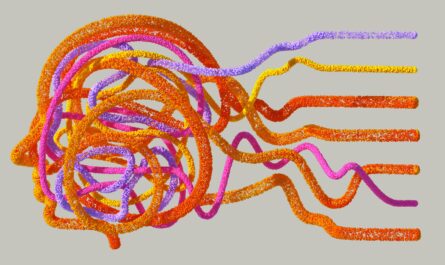Genetic opponent: Neuroscientists have discovered a gene variant that could protect high-risk patients from Alzheimer’s. It reduces the likelihood of developing Alzheimer’s by up to 70 percent. Carriers of this gene variant could be largely protected from dementia because their blood-brain barrier is more permeable. This removes harmful protein clumps from the brain before they cause neurological damage. The knowledge could also lead to new therapies for Alzheimer’s dementia.
The exact causes of Alzheimer’s dementia are still unclear. Depending on the subtype, various factors may play a role. What is known, however, is that the disease is partly genetic. For example, people who carry the so-called e4 form of the APOE gene in their genome have a significantly higher risk of developing Alzheimer’s than people without this gene. But there are also people who, despite this gene, never develop symptoms of dementia.
Searching for clues in high-risk patients
“From these resilient people, we can learn a lot about the disease and what genetic and non-genetic factors might protect against Alzheimer’s,” says senior author Badri Vardarajan from Columbia University in New York. “We hypothesized that these resistant people might have genetic variants that protect them from APOEe4.”
To test this hypothesis, a team of neuroscientists led by Vardarajan and first author Prabesh Bhattarai examined the genetic makeup of around 3,500 such high-risk patients in more detail. The test subjects were over 70 years old and carriers of the APOEe4 gene variant. Some had already suffered from Alzheimer’s, others had not. Most of the participants lived in Northern Manhattan, New York, and were taking part in a study on diseases of aging that has been ongoing there for over 30 years.
Gene variant alters the blood-brain barrier
The analysis of the DNA sequences revealed that some carriers of the APOEe4 gene variant without Alzheimer’s symptoms actually carry another special gene variant. The modified gene FN1 codes for the protein fibronectin – a component of the blood-brain barrier. This regulates which substances get from the blood to the brain and vice versa. In some Alzheimer’s patients, however, the blood-brain barrier contains much larger amounts of fibronectin than in healthy people and is therefore more impermeable, as neuroscientists explain.
However, this is not the case for people with the newly discovered variant of the fibronectin gene in their genome: these people do not have increased levels of fibronectin in the blood-brain barrier. This appears to protect them from Alzheimer’s disease, report Bhattarai and his colleagues.
Breaking down harmful protein clumps
But what advantage does it have to have a permeable blood-brain barrier with little fibronectin? The team suspects that misfolded forms of amyloid proteins can then more easily escape from the brain. In Alzheimer’s patients with a lot of fibronectin in the blood-brain barrier, these amyloid proteins instead accumulate in the brain and clump together there, according to the researchers’ theory.
“Excess fibronectin could prevent the clearance of amyloid deposits from the brain,” says co-author Caghan Kizil from Columbia University. Over time, this causes Alzheimer’s symptoms to develop. “Alzheimer’s disease may begin with amyloid deposits in the brain, but the symptoms of the disease are the result of neurological changes that occur after the deposits appear,” he explains. If the amyloids are transported away across the blood-brain barrier in a timely manner, no brain damage or symptoms occur.
Follow-up studies on zebrafish with Alzheimer’s disease confirmed this hypothesis, the team reports. The neuroscientists also found that the amyloid clumps in the fish’s brains became smaller again when the proportion of fibronectin in their blood-brain barrier was reduced. The neurological damage then also decreased. The discovery reinforces previous evidence that the blood-brain barrier and the brain’s blood vessels play a major role in Alzheimer’s disease.
71 percent lower risk of Alzheimer’s disease
Based on the findings, the research team repeated the research. More than 7,000 other people over 60 years of age with the risk gene variant APOEe4 took part, mostly from Europe. In this group of test subjects, Bhattarai and his colleagues also found people with protective gene variants and no Alzheimer’s symptoms. “We found the same fibronectin variant, which confirmed our results,” says Vardarajan.
A total of around 11,000 test subjects of various origins with the APOEe4 gene variant took part in the two studies. People who also carried the fibronectin gene variant had a 71 percent lower risk of developing Alzheimer’s, as the researchers calculated. In those who did develop Alzheimer’s, the symptoms appeared three and a half years later than without the fibronectin gene variant.
However, the gene variant that protects against Alzheimer’s is rather rare: it only occurs in around one to three percent of Americans with the risk gene APOEe4. It is not yet known whether the protective fibronectin gene variant also occurs in the genome of people without the Alzheimer’s risk gene APOEe4. Overall, however, it appears to occur more frequently than other, extremely rare, protective gene variants.
New approach to prevention and therapy
The new findings could now be used in the development of Alzheimer’s therapies. “A therapy that targets fibronectin and mimics the effect of the protective gene variant could provide a powerful defense against the disease,” says co-author Richard Mayeux from Columbia University. In this way, the disease could be treated or prevented entirely. “Anything that reduces excess fibronectin should provide some protection against Alzheimer’s. A drug that does this could be a significant step forward in the fight against this disease,” adds Kizil.
Previous treatments – using antibody preparations such as donanemab or lecanemab – aim to attack and break down the harmful amyloid aggregates in the brain via the immune system. Although this works very well, it does not reverse existing symptoms and nerve damage. However, the therapeutic approach in the blood-brain barrier could prevent protein aggregates before they cause damage. “We may need to start clearing amyloid much earlier. We believe this can happen through the bloodstream,” adds Mayeux. (Acta Neuropathologica, 2024; doi: 10.1007/s00401-024-02721-1)
Source: Columbia University Irving Medical Center
April 12, 2024 – Claudia Krapp




